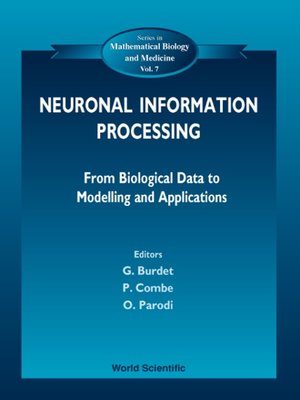Neuronal Information Processing, From Biological Data to Modelling and Application
ebook ∣ Series In Mathematical Biology and Medicine
By P Combe

Sign up to save your library
With an OverDrive account, you can save your favorite libraries for at-a-glance information about availability. Find out more about OverDrive accounts.
Find this title in Libby, the library reading app by OverDrive.



Search for a digital library with this title
Title found at these libraries:
| Library Name | Distance |
|---|---|
| Loading... |
Recent developments in the neurosciences have considerably modified our knowledge of both the operating modes of neurons and information processing in the cortex. Multi-unit recordings have enabled temporal correlations to be detected, within temporal windows of the order of 1ms. Oscillations corresponding to a quasi-periodic spike-giving, synchronized over several visual cortical areas, have been observed in anaesthesized cats and monkeys. Recent studies have also focused on the role played by the dendritic arborization.These developments have led to considerable interest in a coding scheme which relies on precise spatio-temporal patterns from both the theoretical and experimental points of view. This prompts us to look into new models for information processing which will proceed, for example, from a synchronous detection of correlated spike giving, and is particularly robust against noise. Such models could bring about original technical applications for information processing and control.Further developments in this field may be of major importance for our understanding of the basic mechanisms of perception and cognition. They could also lead to new concepts in applications directed towards artificial perception and pattern recognition. Up to now, artificial systems for pattern recognition are far from reaching the standards of human vision. Systems based on a temporal coding by spikes may now be expected to bring about major improvements in this field.This book covers the lectures delivered at a summer school on neuronal information processing. It includes information on all the above-mentioned developments, and also provides the reader with the state-of-the-art in every relevant field, including the neurosciences, physics, mathematics, and information and control theory.







